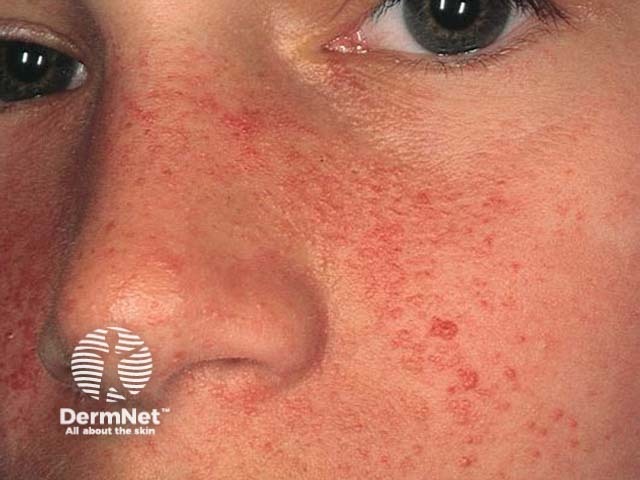Main menu
Common skin conditions

NEWS
Join DermNet PRO
Read more
Quick links
Mixed diagnoses – 10 cases (8 of 11)
For each of the ten cases, study the image(s) and then answer the questions. You can click on the image to view a larger version if required.
Each case should take approximately five minutes to complete. There is a list of suggested further reading material at the end of the quiz.
When you finish the quiz, you can download a certificate.
Case 1

What are these lesions called?
The preferred name for the lesions is "angiofibromas" but the condition was previously referred to as "adenoma sebaceum".
What underlying systemic disorder does she have?
Tuberous sclerosis (also known as epiloia) - an autosomal dominant neurocutaneous disorder affecting skin, brain, eyes, heart, kidney, lungs and bones. Many patients suffer from seizures and mental retardation, but they may be of normal intelligence.
What other cutaneous signs may be associated?
The cutaneous signs of tuberous sclerosis include:
Angiofibromas. These are seen in 90% of cases and develop on nasolabial folds, cheeks and chin from childhood.
Ash-leaf macules. One or more hypopigmented macules are present at birth in 80% of cases. In fair-skinned individuals, they can be seen more easily using a Wood's light.
Shagreen patch (connective tissue naevus). One or more flesh-coloured thickened plaques are found on the lower back of the majority of cases and arise in early childhood.
Koenen's tumours (periungual fibromas).
Facial fibromas are less common.
Nonspecific findings include café-au-lait spots, white freckles on the shins and diffuse bronzing.
